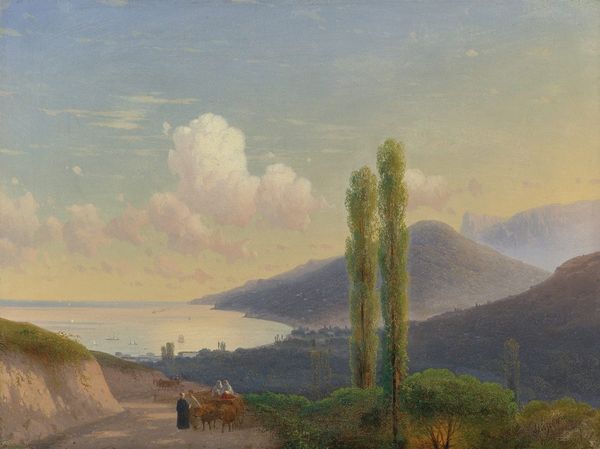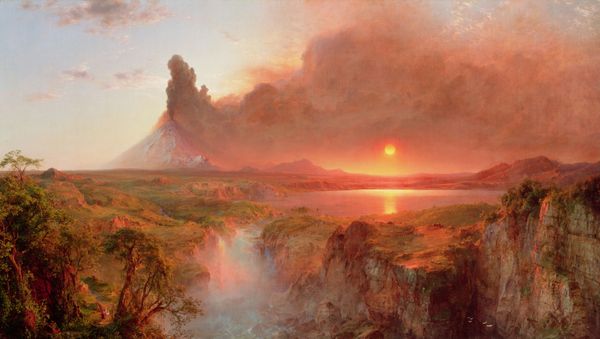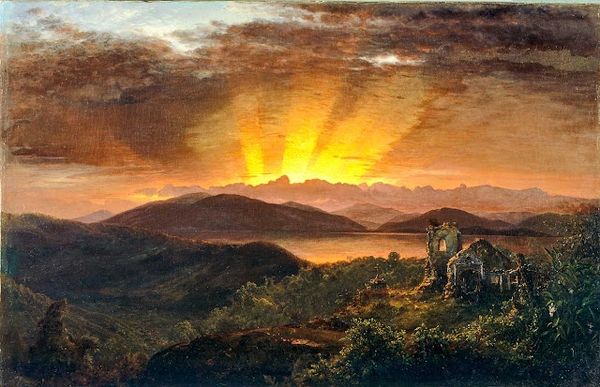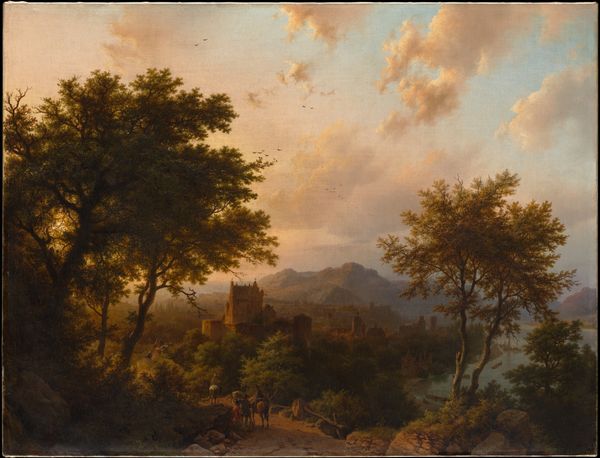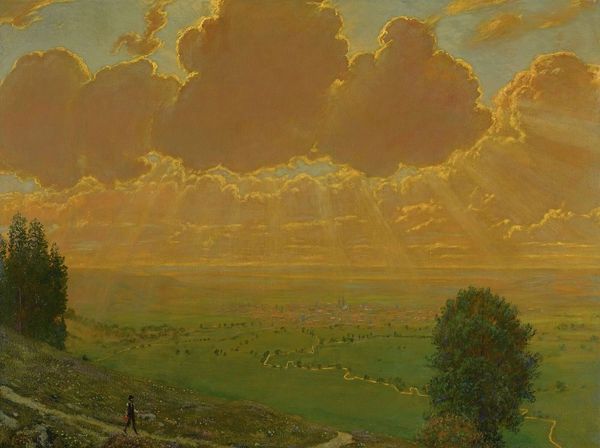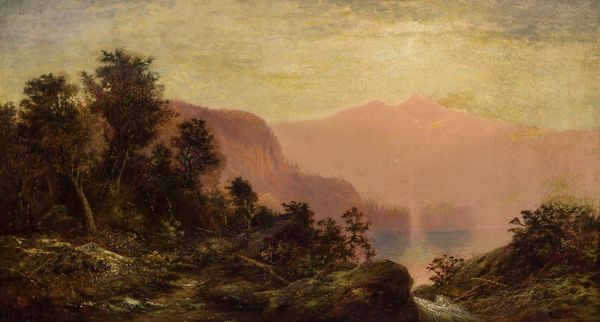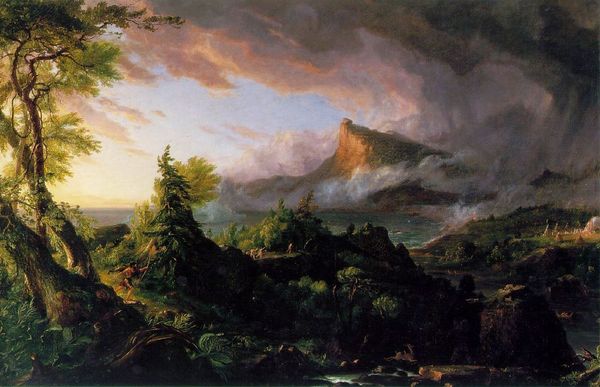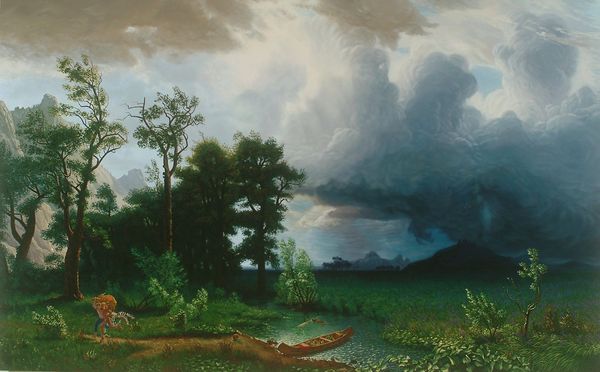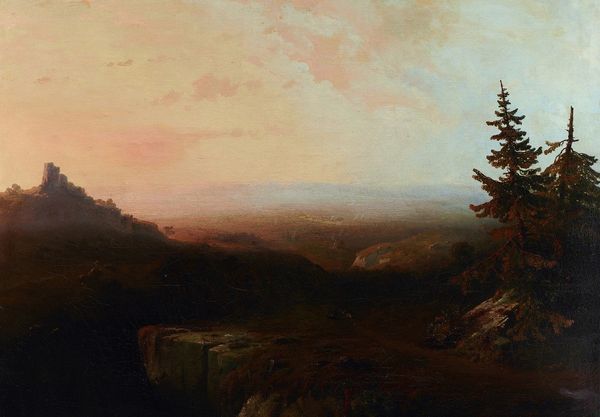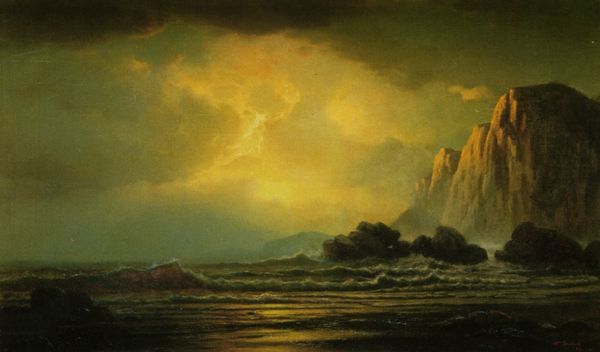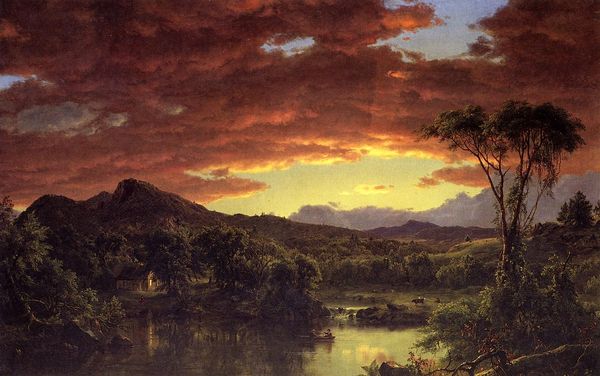
Copyright: Public Domain: Artvee
Editor: We're looking at "Cloudy Skies" painted by Frederic Edwin Church in 1865. It's an oil painting and feels very serene, almost meditative. What do you see in this piece, and how do you interpret the intense use of light? Curator: Beyond the tranquil surface, I see a visual commentary on power, both natural and societal. Consider the date: 1865. This was the end of the American Civil War. Could this sky, radiant yet obscured, symbolize a nation grappling with reconstruction, its ideals of liberty clouded by the harsh realities of slavery and inequality? Editor: That's a fascinating reading! I hadn’t considered the historical context so directly. The clouds do seem to be obscuring something, perhaps progress. Curator: Exactly. And Church, a prominent figure in the Hudson River School, wasn't just painting pretty landscapes. He was deeply engaged with the social and political issues of his time. These artists romanticized nature, but also reminded viewers of its power, something that the human conflicts are set against. Is it a comment on humanity’s limited agency compared to Nature's scale? Or is it about who gets to access and own beauty in nature, reflected in access to landscapes at the time? Editor: That makes me look at the painting in a totally different light! I was initially drawn to the aesthetics, but now I see layers of meaning related to social justice and power. Curator: Art always reflects the world it's created in and has the potential to push back. How we interpret that relationship and put it to use today is up to us. Editor: Thanks for showing me the rich intersection of art, history, and politics in this artwork. It really underscores the importance of understanding context when interpreting art.
Comments
No comments
Be the first to comment and join the conversation on the ultimate creative platform.

